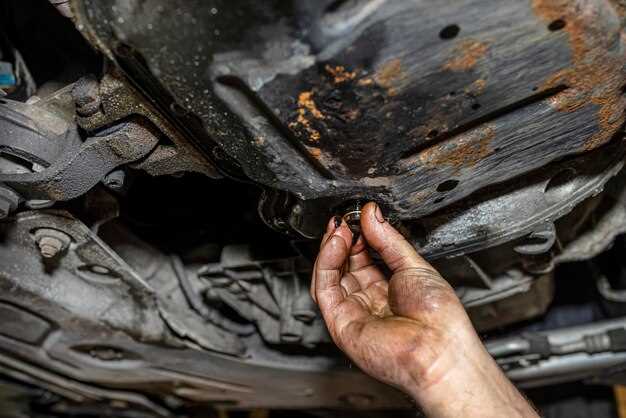How to Prevent Rust on Your Vehicle

Rust is not just an aesthetic issue; it poses a serious threat to the integrity and longevity of your vehicle. The formation of rust can accelerate deterioration, leading to costly repairs and potential safety hazards. Effective protection against rust requires not only a keen understanding of its causes but also proactive measures to keep it at bay.
The primary culprits behind rust formation include moisture, salt, and debris that can accumulate on your vehicle’s surface. By implementing simple yet effective strategies, you can significantly reduce the risk of rust developing. Regular maintenance, such as washing and waxing your vehicle, goes a long way in preserving its exterior and ensuring that protection against rust is always a priority.
In this article, we will explore practical tips and essential practices that can help you prevent rust from forming on your vehicle, ensuring it remains in top condition for years to come. Safeguarding your investment is crucial, and with the right approach, you can extend the life of your vehicle while maintaining its value and appearance.
Regularly Inspect and Clean Exposed Areas
Regular inspections of exposed areas on your vehicle are crucial for rust prevention. Focus on components that are more susceptible to moisture buildup, such as wheel wells, undercarriage, and seams. These regions often trap dirt and debris, creating an environment conducive to corrosion. Conduct thorough checks every few months or after exposure to harsh weather conditions.
Cleaning these areas helps protect your vehicle from rust formation. Use a high-pressure washer to remove dirt, salt, and grime that accumulate on the surface. Additionally, consider applying a protective coating or sealant designed for automotive use. This not only provides an extra layer of protection but can also repel moisture, further reducing the risk of rust.
Pay attention to any scratches, chips, or dings in the paint, as these can expose the metal beneath to moisture and air. Touching up these imperfections promptly can significantly aid in preventing rust progression. By incorporating regular inspections and thorough cleaning into your vehicle care routine, you ensure long-lasting protection against rust formation.
Apply Protective Coatings and Rust Inhibitors

To enhance the protection of your vehicle against rust, applying protective coatings and rust inhibitors is essential. These products form a barrier that prevents moisture and corrosive substances from coming into contact with the metal surfaces of your car.
Protective coatings such as paint sealants, waxes, and ceramic coatings provide an additional layer that can significantly reduce the risk of rust formation. These coatings not only improve the vehicle’s appearance but also extend the lifespan of the exterior finish. Regular application can keep your vehicle looking new while safeguarding it from environmental factors.
In addition to coatings, there are specialized rust inhibitors available in spray or liquid form that can penetrate existing paint and rust to provide effective protection. These inhibitors create a chemical barrier that impedes rust progression, making them ideal for vulnerable areas like wheel wells and undercarriages.
It is important to clean the surfaces thoroughly before applying any protective product to ensure maximum adhesion and effectiveness. For best results, follow the manufacturer’s instructions regarding application frequency and methods. Consistent use of protective coatings and rust inhibitors will keep your vehicle rust-free and in top condition for years to come.
Maintain Proper Drainage and Address Scratches Promptly

Proper drainage is crucial for the long-term protection of your vehicle against rust formation. Water accumulation on various parts of your car, especially in hidden areas, can lead to corrosion over time. Ensure that your vehicle’s drainage systems, such as the sunroof drains and wheel wells, are clear of debris. Regularly inspect these areas and clean them to facilitate proper water runoff.
Similarly, addressing scratches and minor damages promptly is essential for effective prevention of rust. Even small abrasions can expose the metal beneath your vehicle’s paint, making it vulnerable to moisture and environmental factors. As soon as you notice a scratch, treat it with touch-up paint or a protective sealant to prevent rust from taking hold. Ignoring these minor issues can lead to significant problems down the line, compromising your vehicle’s integrity.
By maintaining proper drainage and promptly addressing scratches, you enhance your vehicle’s protection against rust and prolong its lifespan. Prioritizing these simple yet effective measures can save you from costly repairs and keep your car looking great for years to come.

